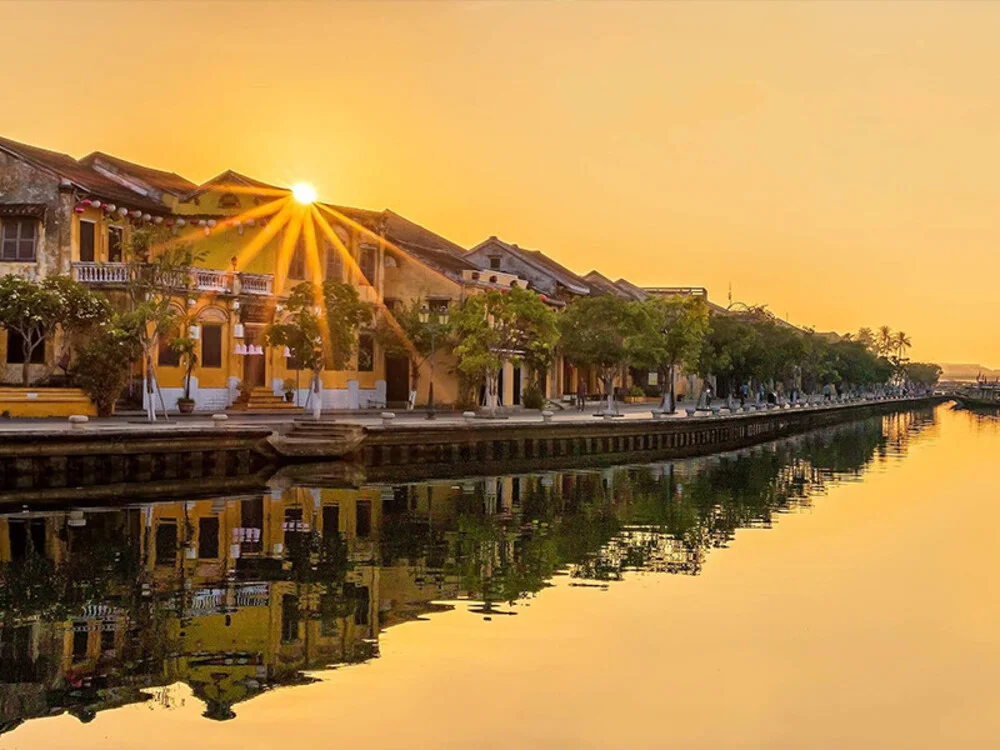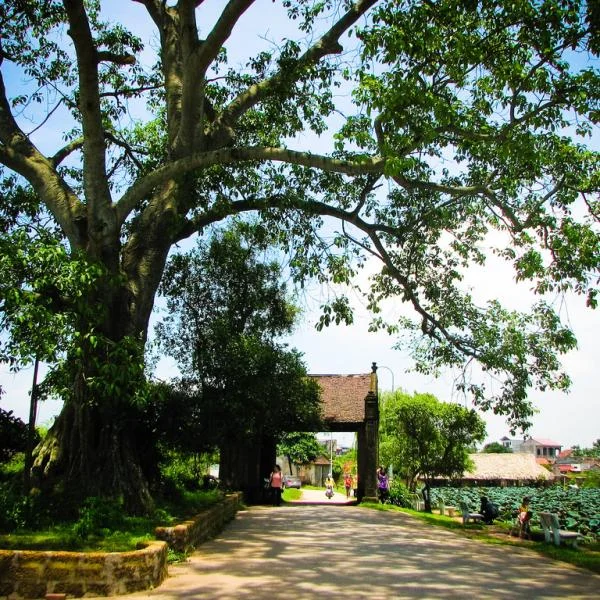Best Time to Visit Vietnam: A Month-by-Month Guide
Best Time to Visit Vietnam: A Month-by-Month Guide
Planning a trip to Vietnam? Knowing the best time to visit Vietnam is crucial for an unforgettable experience. As a comprehensive Vietnam travel guide, this article will help you navigate the country's diverse climate and regional differences. Vietnam's varied geography results in distinct weather patterns across the country, so the ideal month for your visit depends on your priorities: beach holidays, mountain trekking, cultural exploration, or city sightseeing. This guide breaks down Vietnam's weather by month and highlights the best destinations throughout the year, helping you plan the perfect trip.
Seasons in Vietnam: Understanding the Climate
Before diving into the month-by-month breakdown, it's essential to understand the seasons in Vietnam. Unlike countries with four distinct seasons in a year, Vietnam's tropical monsoon climate creates a more complex weather pattern. The country experiences regional climate differences, with the north having more defined seasons compared to the south.
Weather and Seasons in Vietnam
Vietnam generally has two main seasons: the wet season (May to October) and the dry season (November to April). However, these seasons can vary depending on the region:
- North Vietnam : Experiences all four seasons, with a cool winter and hot summer.
- Central Vietnam : Has a delayed rainy season, often lasting from September to January.
- South Vietnam : Has two distinct seasons - wet and dry.
Now, let's explore the best time to visit Vietnam based on monthly weather patterns and regional variations.

Travel to Vietnam in Winter
Winter in Vietnam, particularly from December to February, offers optimal climate conditions in the north and south. The central region is just emerging from its rainy season during this time.
Travel to Vietnam in December
December marks the beginning of the dry season in many parts of Vietnam. The weather is generally pleasant, with the only uncertainty being in central Vietnam. If you're looking for warm weather, head to the beautiful beaches of southern Vietnam like Mui Ne or Phu Quoc Island. In Ho Chi Minh City, the average temperature hovers around 26°C (79°F).
Northern Vietnam, including Hanoi, is cooler but still suitable for excursions. In mountainous areas like Sapa, temperatures drop significantly, so pack warm clothing if you plan to visit these regions.
Travel to Vietnam in January
January is an excellent time to explore both the north and south of Vietnam. In the south, you'll find a dry climate with average temperatures around 26°C (79°F), perfect for visiting Ho Chi Minh City and easily accessible beaches like Phan Thiet and Mui Ne.
Although January is the coldest month in northern Vietnam, it's also the least rainy. Hanoi enjoys pleasant temperatures averaging around 20°C (68°F). While visiting Halong Bay is possible, be prepared for potential fog that can add a mystical touch to the landscape.
Travel to Vietnam in February
February offers optimal climate conditions throughout most of Vietnam. The coasts of the south and center are perfect for beach holidays and inland excursions. Northern Vietnam becomes more accessible as temperatures start to rise while precipitation remains low.
Important Note : Between January and February, Tet (the Vietnamese lunar new year) takes place. This cultural festival lasts seven days, and many restaurants, museums, and banks close. It's advisable to book internal flight tickets, trains, and sleeping buses in advance as many Vietnamese people travel during this period.
Travel to Vietnam in Spring

Spring is arguably one of the best seasons to travel in Vietnam. The weather is generally pleasant across the country, with the rainy season gradually approaching in the north and south while the center remains stable.
Travel to Vietnam in March
March is one of the best months to visit Vietnam, especially if you plan to explore the country from north to south. In southern Vietnam, you can expect sunny days with pleasant warmth and temperatures around 28°C (82°F). The dry climate makes it an ideal time to visit the central highlands, including Da Lat and its surroundings.
March is perfect for exploring the cave complex in Phong Nha-Ke Bang National Park. In the north, rising temperatures create ideal conditions for mountain excursions. Halong Bay typically enjoys clear skies, making it an excellent month for a boat tour.
Travel to Vietnam in April
April sees rising temperatures throughout Vietnam. In the south, it's particularly hot, with daily averages in Ho Chi Minh City exceeding 29°C (84°F). While the chances of rain slowly increase, April remains one of the best months for sun-seekers planning a trip to southern Vietnam's beaches.
Central Vietnam shines in April, making it an excellent time to visit Hoi An, Danang, the imperial city of Hue, and the beaches of Nha Trang. The climate is also pleasant in the central highlands. In the north, temperatures and rainfall increase, but the blooming flowers enhance the landscapes, making it a beautiful time for excursions.
Travel to Vietnam in May
May marks the beginning of the wet season in southern Vietnam, but it's still easy to avoid afternoon showers. In the north, temperatures rise and rainfall increases, but it's still warm and dry enough for excursions. The central region is the best area to visit in May, characterized by warm and sunny days.
Travel to Vietnam in Summer

Summer in Vietnam brings the rainy season to the north and south of the country. The center remains pleasant as rainfall starts later in this region.
Travel to Vietnam in June
June sees the rainy season in full swing in southern Vietnam, which can result in possible flooding. The central highlands also experience frequent rainfall. However, June is excellent for visiting the coastal region of central Vietnam, including Hoi An and Danang, where tourists can relax on nearby beaches.
In the north, Hanoi and nearby areas like Mai Chau are still largely dry. However, if you're planning excursions in the mountainous areas of the north, be prepared for humid conditions.
Travel to Vietnam in July
July brings heavy showers to both ends of the country. Temperatures peak in the north, with daily averages in Hanoi exceeding 29°C (84°F). The central coasts remain the best area to visit, with beautiful sunny days and occasional cooling rains.
Travel to Vietnam in August
August offers variable weather with high temperatures and humidity levels throughout Vietnam. The north is in full summer mode, while the center still enjoys its best period, with rain typically appearing only at the end of the month. The south experiences its rainy season, with sunny and hot days punctuated by brief evening showers.
Travel to Vietnam in Autumn

Autumn sees the end of the rainy season in northern and southern Vietnam. The central region, where rainfall starts later, has an unstable but gradually improving climate.
Travel to Vietnam in September
September brings decreasing rainfall and high temperatures to northern and southern Vietnam. This makes it possible to resume excursions to mountainous areas like Sapa in the north. However, conditions worsen in central Vietnam's coastal areas and the central highlands as the rainy season approaches.
Travel to Vietnam in October
October is an excellent month to explore southern and northern Vietnam. The climate is drier in the south, perfect for visiting Ho Chi Minh City and the Mekong Delta. In the north, conditions are ideal for hiking in places like Sapa, Ha Giang, and Mai Chau. October coincides with rice harvesting, creating fascinating landscapes.
However, October is not the best time to visit central Vietnam due to continuous rains and potential floods affecting areas like Hoi An.
Travel to Vietnam in November
November is ideal for both beach holidays in southern Vietnam and hiking in the northern mountains. It's also one of the best times for a boat trip in Halong Bay. However, the rainy season persists in central Vietnam's coastal areas, making it less ideal for visiting Danang, Hoi An, or Nha Trang.
Conclusion: Best Time to Visit Vietnam
As this Vietnam travel guide demonstrates, the best time to visit Vietnam depends on your desired destinations and activities. The country's diverse climate and regional variations offer something for every traveler throughout the year. Whether you're drawn to the beaches of the south, the cultural richness of the central region, or the mountainous landscapes of the north, understanding Vietnam's weather patterns will help you plan the perfect trip. Remember to consider factors like the Tet holiday and typhoon season when planning your visit to make the most of your Vietnamese adventure.








